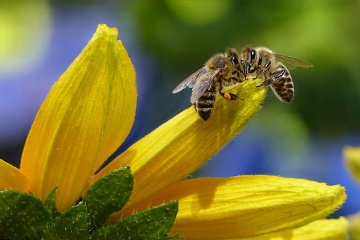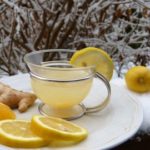
There are benefits to attracting bees to your garden. But be careful.
Bees are absolutely essential to the growth and survival of every healthy garden. Bees act as nature’s pollinators, helping to allow for the growth of various flowers, fruits and vegetables. This list will help you find out how to attract bees to your garden.
Be careful with pesticides. If you are trying to attract bees and helpful bugs to your garden, it might be best to avoid pesticides altogether, since most of them kill the “good bugs” along with the less desirable ones. If you absolutely have to use pesticides, try to look for the one with the lowest toxicity you can find, and be sure to follow all of the instructions to a tee. Some pesticides are particularly bee-friendly, so examine the labels carefully. If you’re trying to attract bees, the best time of day to use pesticides is around dusk, or even later if possible.
Plant native plants. Science has shown that native local plants are far more attractive to bees than exotic plants or other imports. Native plants are also a plus for the gardener because they are easier to grow in your environment and often need very little attention. Additionally, native plants usually do not require any pesticides. Black-eyed Susans and daisies are two native flowers that are particularly well-known for attracting bees.
Plant flowers with strong scents. Bees have an excellent sense of smell which they use to track down flowers that produce ample amounts of pollen or nectar. If you are planting a variety of flowers, look for those with very different smells, since a wider variety of smells will attract a wider variety of bees.
Plant flowers of many different colors. Bees not only have a great sense of smell, but they also have a sharp eye for color. They look for color to find the pollen and nectar they seek. Studies show that bees are typically most attracted to flowers that are violet, purple and blue, but yellow and white flowers are also good for attracting bees.
Plant flowers of many different shapes. Like with colors, variety is also the key when it comes to shapes. There are many different types and sizes of bees, and different bees will seek out flowers that are shaped best for them. Give different species of bees a variety shapes, and as a result, more bees will be attracted to your garden.
Clump your flowers together. Flowers of the same species that are planted in clusters tend to attract more bees than individual flowers planted in different spots throughout the garden. If you have enough space, plant big clumps of flowers five feet or more in length. The bigger the clumps the better.
Plant for all seasons. Even though we tend to associate bees with spring time, different species of bees feed at different times of the year. Make sure your garden has a diverse array of plants that flower through spring as well as in the summer and fall.
Plant in “bee friendly” areas. Bees prefer the sun to the shade, so be sure to plant flowers that need plenty of sunshine. Also, some smaller types of bees need to be sheltered from strong winds, so it’s often a good idea to plant flowers behind a sizable structure like a house, shed, bush or large tree that will help guard smaller bees against wind.
Use clover to your advantage. Many gardeners take pride in their lawns being clover free, but clover is a major attraction for bees. In addition, clover is a nitrogen-fixing legume that is excellent for the health of your lawn.
Provide bee nesting sites. Flowers aren’t the only thing bees look for in a garden. Bees are usually not social creatures, and most tend to nest individually. They seek bare branches and bare ground for nesting. Provide some bare patches in your lawn or garden for bees to nest. You can put these patches in especially inconspicuous areas to keep the appearance of a precisely manicured lawn.




